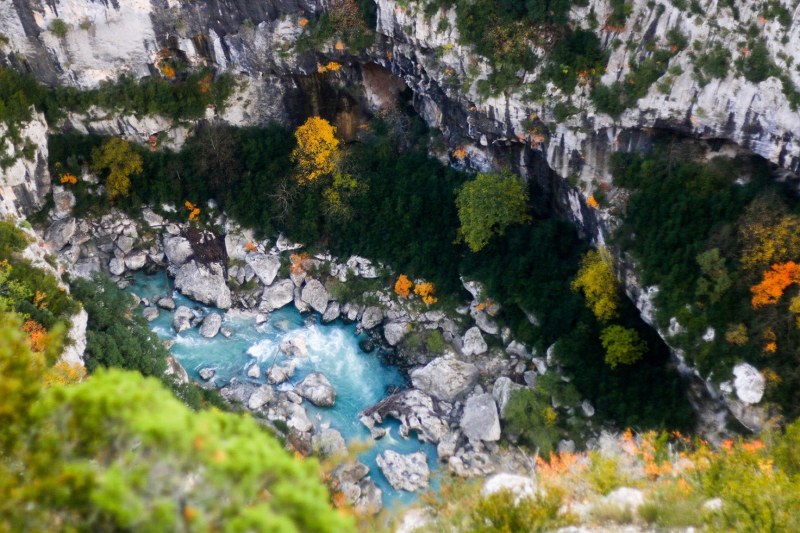How the gorge du Verdon was born

We spend a lot of time in the gorges du Verdon with holiday makers. We have walked though it and over it. We have kayaked, swam and white water rafted it. We have flown over it with paragliders. We have observed and photographed it's flora and fauna. We have picnicked and socialised in it. The gorge is a place that has become a friend of ours and to many of our holiday makers. Often, when I am passing through it, I have wondered how and when it began. So for my first Go Provence blog I thought I would do some research into the beginnings of the gorge and explain it so it is understandable to the non-scientific person. Like me.
The gorge du Verdon’s, geographic wonder of Provence, embryonic stage began when the reptiles were dominant on our planet, over two hundred million years ago during the Triassic period. Provence began to sink and continued to do so until the Jurassic period when it was fully immersed under the sea. During this time, some forty million years ago, coral calcium was deposited in abundance over the shallow sea floor, literally laying down the foundations of the limestone building blocks that we see when we pass through the gorges today.
Limestone, the third most abundant sedimentary rock on earth, is largely formed from marine and fresh water life. Its colour is variable from white to pale shades of yellow, greys and brown. You can see all of these colours on the massive walls of the gorge. I often think that these randomly selected colours of different shapes and splashes that so beautifully pattern the gorge rock faces, is someone’s bad idea of a paint job, an ancient mythological god having fun with his pallet of limestone colours?
For forty million years, whilst Provence was under water, the deaths and skeletal remains of billions of sea creatures lay down on the sea floor was fossilised by lithification.
As we enter the final part of the Mesozoic period, the Cretaceous period, over ninety million years ago, when rhinoceros, giraffes, lions, elephants and gazelles roamed around Moustiers Sainte-Marie, were grazing on the first ever flowers on earth, the African techtonic plates progressing northwards were slowly colliding with the European techtonic plate. This caused the land to fold and buckle lifting Provence out of the sea and lead to the creating of the Alps. Moving swiftly on eighty-two million years, when you and are still were not even thought of, the Alps region had some serious, bad weather. This was a time that it was believed that homonids started to spread out from Africa. So, if the first, now extinct ancestors of man, did make it up to Provence at this time, they would definitely have needed their umbrellas and wellies.
The amount of rainfall was so massive and frequent that the young Alps began to erode washing away all the top covering.
All of these materials were washed away into the south-western part of the French Alps, and filled up vallies levelling up an area of eight hundred kilometres square forming a plateau. We know this plateau by the name of the plateau of Valensole, famous for its sprawling lavender fields and panoramic views of nearby hills and mountains.
This brings us nicely to the one hundred and sixty-six kilometre long Verdon, its source lying at an elevation of two thousand eight hundred and nineteen metres, south of Barcelonnette. The river, which has now been tamed by a series of EDF dams, flows at approximately eight to thirty cubic metres per second. Before the dams were built, the river Verdon would flow during times of snow melt combined with heavy rainfall at a rate of eight hundred cubic metres per second an astonishing difference the dams make. Today’s Verdon is very much like a retired race horse. As I mentioned earlier, two million years ago when the Alps region was experiencing regular heavy rainfall, the Verdon was flowing at a maximum delivery rate of three thousand cubic metres per second. Imagine kayaking that. Remember that the river at this time was loaded with debris from the Alps. Travelling at high speed towards the sea, the river found a gigantic but narrow cleft on the limestone plateau. The cleft was dug out by the Verdon’s dense torrent, which gauged out caves and overthrew rocks. A few hundred thousand years later, the soft, narrow limestone river bed carved a gorge up to seven hundred metres deep in some places.
This is the gorge that we love and enjoy today. A violent history that gave birth to Provence’s emerald jewel in her crown.
